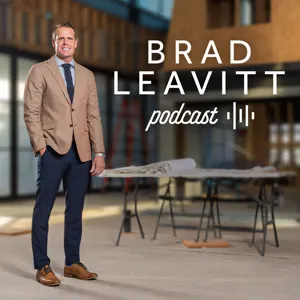Trust your gut with Tom Gallagher

Listen in as Tom discusses the importance of trusting your gut, using simple systems, and documenting your progress.
Tom, began his construction career 32 years ago, in the field placing concrete and working as a carpenter. Since then he has worked on many types of projects including; hotels, office buildings, high rise residential, single family residential, parking structures, industrial and high-tech facilities. Tom graduated from Washington State University in 1990 and has a Bachelor of Science in Construction Management with a minor in business.
Topics Discussed:
- 2:50 Starting a business during the 2008 building crisis
- 6:36 Quality, Craft, Integrity
- 10:50 Comercial projects
- 15:01 Hiring new talent and trusting your gut
- 20:40 Selling point for new clients is our systems
- 25:05 Going from commercial to residential (Documenting)
- 34:50 Building report with Neighbors
- 39:20 Excel & Word
- 46:48 Work / Life Balance
- 52:09 Projections on the economy
Sponsors:
- Visit https://buildertrend.com/aft/ to get a 60-day money-back guarantee on your Buildertrend account!
- Pella Windows & Doors - https://www.pella.com/
- Sub-Zero, Wolf and Cove: Schedule an appointment at subzero-wolf.com/Scottsdale or 480.921.0900
Connect with Tom Gallagher:
- Website - https://gallagherco.net/
- Instagram - https://www.instagram.com/gallaghercollc/
Connect with Brad Leavitt:
- Website - https://www.aftconstructionpodcast.com/
- Instagram - https://instagram.com/aft_construction
- Facebook - https://www.facebook.com/aftconstruction
- Houzz - https://www.houzz.com/pro/aft-construction/aft-construction
- Pinterest - https://www.pinterest.ph/AFT_CONSTRUCTION/
- YouTube - https://www.youtube.com/channel/UCzB4R_DHPVV1SPh7RUfR5jg